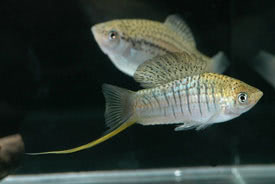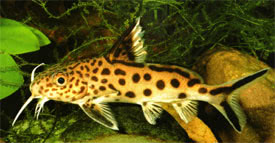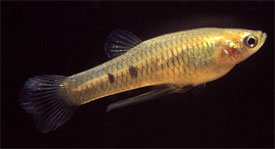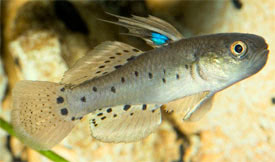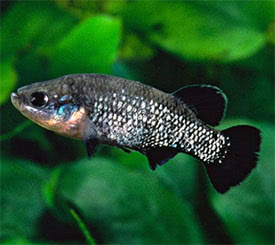
 Magyarul / Hungarian
Magyarul / Hungarian
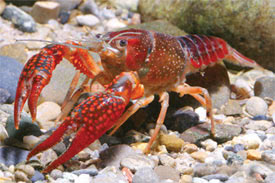


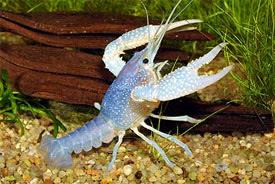
- Scientific name: Procambarus clarkii
- Synonyms: -
- Common name: Red Swamp Crayfish
- Group: Freshwater invertebrates
- Habitat: North America; Southeastern United States and Northeastern Mexico.
- Size: 10-12 cm
- Biotope: Inhabits in slow-flowing streams, swamps, ponds and rice fields.
- Social behavior: Very territorial and aggressive to other crayfish. It should not be kept with long finned or slow-moving fish, because the crayfish may eats them, so it is best kept in a species-only tank. These Crayfish are cannibalistic, so keep similar sized species otherwise the larger and more powerful crayfish will eat the smaller one.
- Diet: Omnivorous; unfussy eater, it will readily accept any live and dried food (tubifex, bloodworms, fish and green vegetables). Crayfish will eat aquatic plants.
- Breeding: Quite easy
- Tank: Minimum 80 litres
- Population: 5-6 crayfish for 160 litres
- Decoration: They are excellent escape artists, they can climb out of the water on the power cable of a filter, so their tank must be covered. They will disrupt and eat any vegetation, so decorate their tank with rocks and roots. Provide many hiding places such as clay pipe and hollow roots. These Crayfish like to burrow in the substarte.
- Temperature: 20-27 °C
- pH: 7.5-8
- Hardness: 8-18 NK°
- Lifespan: 3-5 years
Description: Crayfish are small lobsterlike freshwater crustaceans with a thin but tough exoskeleton that they shed during development. The wild form of Procambarus clarkii is dark brown-red, but there are several other color forms, such as orange, white and blue. There is a wedge-shaped black stripe on the abdomen of the Red Swamp Crayfish. Juveniles are uniform grey in color, sometimes with overlain by dark wavy lines. Crayfish have 5 pairs of walking legs, the first of which are large pinchers used for feeding. There are also five pairs of swimmerets on the abdomen. Crayfish are most active at night. A small group of 5-6 species can be kept in a larger aquarium, but in this case small fights between them will be unavoidable. Crayfish can regrow lost limbs over several sheds, and a regrown limb has full function. Procambarus clarkii will stop eating 3 to 7 days before shedding, and become more active during the day and much more aggressive toward other crayfish. During shedding, the crayfish will lie on its side. First, the head freed, followed by the claws and legs, finally crayfish frees the tail from the remaining shell. Exhausted from the process, the crayfish now seeks shelter and rests, because they are very vulnerable after shedding. The shed exoskeleton as a source of calcium is typically eaten by its owner or other crayfish. Make sure that their water is clean and well oxygenated, because dirty water can cause the Crayfish’s death. They grow quickly even in only seasonally present water, being able to tolerate dry spells of up to four months, by burrowing into the substrate. Procambarus clarkii has also been introduced to many country, because it is a popular food source, but it may out-compete the native crayfish species. Crayfish farming is usually taking place in rice fields in a concurrent or alternate culture system.
The male crayfish's first set of swimmerets are longer and more prong shaped. The number of eggs laid is determined by the size of the females, and they are usually between 200 and 500. The higher the temperature, the faster the young develop. While carrying eggs and young, females try to remain hidden and are usually found in caves under rocks or roots. Newly hatched crayfish remain with their mother in the burrow for up to 8 weeks and undergo two moults before they can fend for themselves. Cannibalism begins to get extreme when they reach 2-3 cm in length, usually when the tank is too small.










